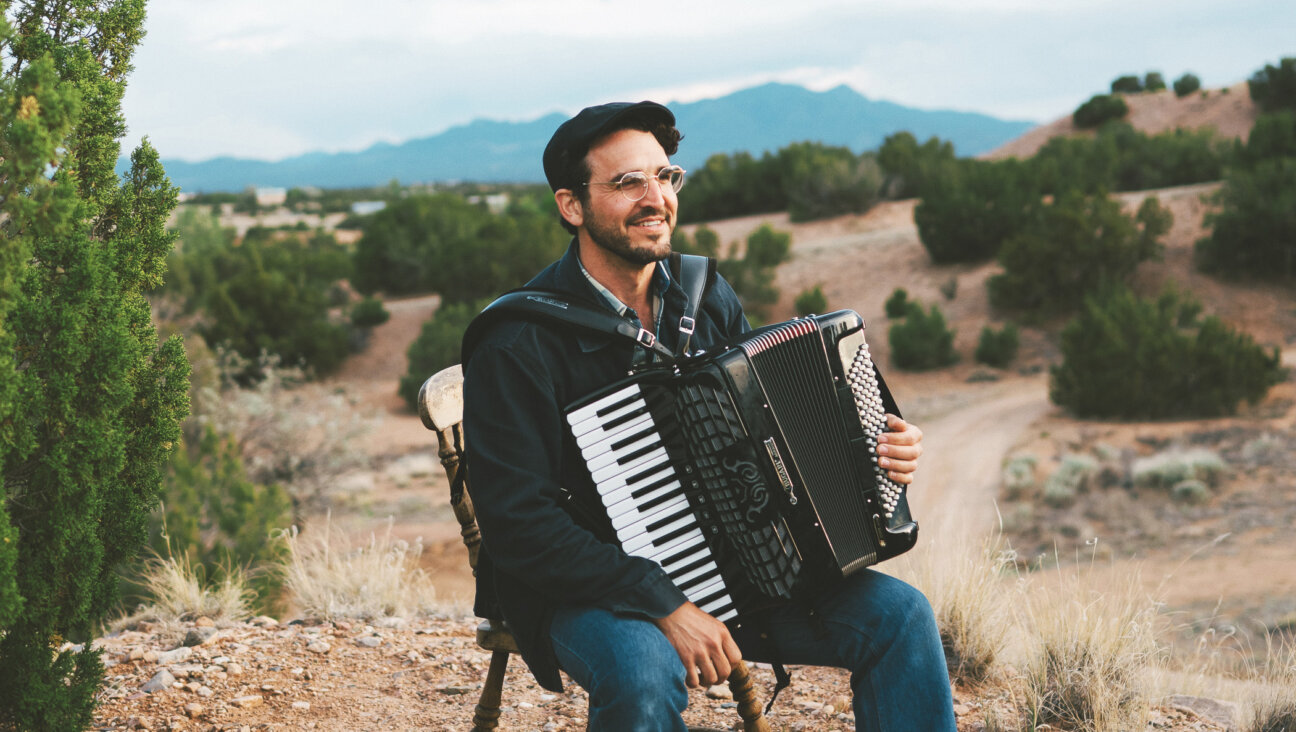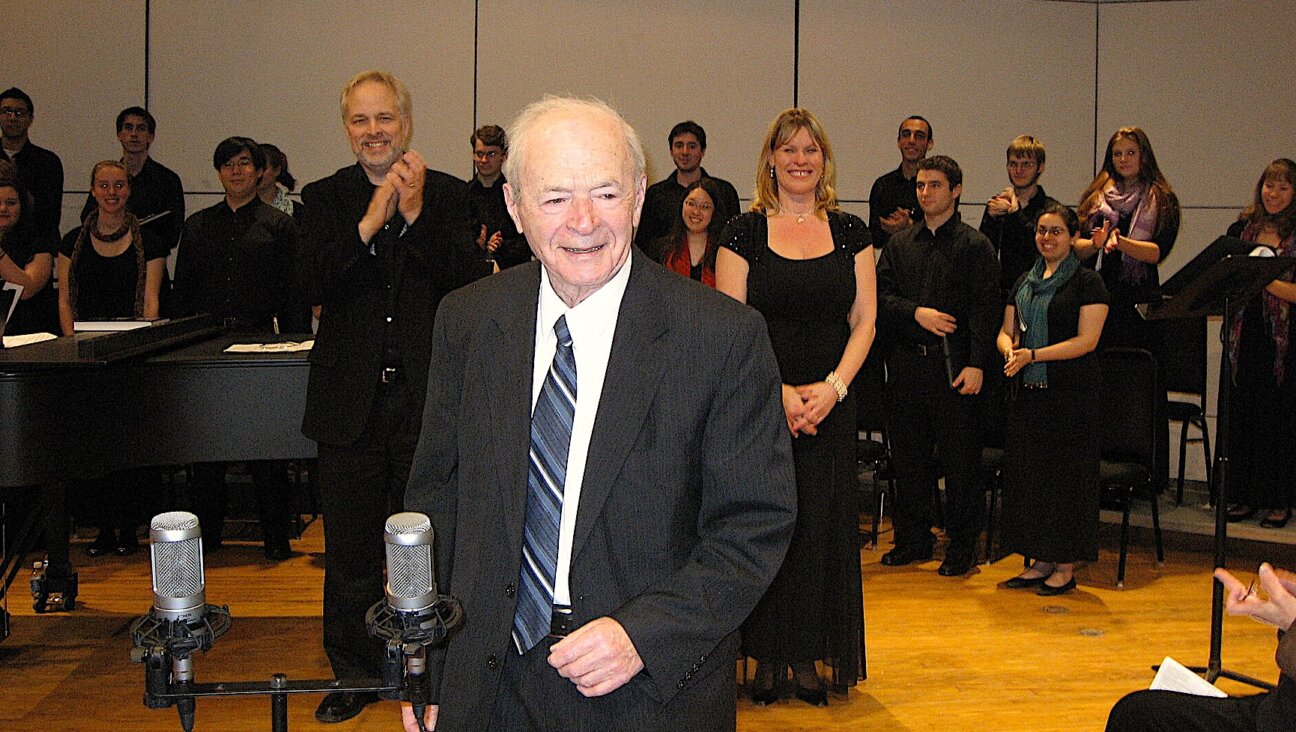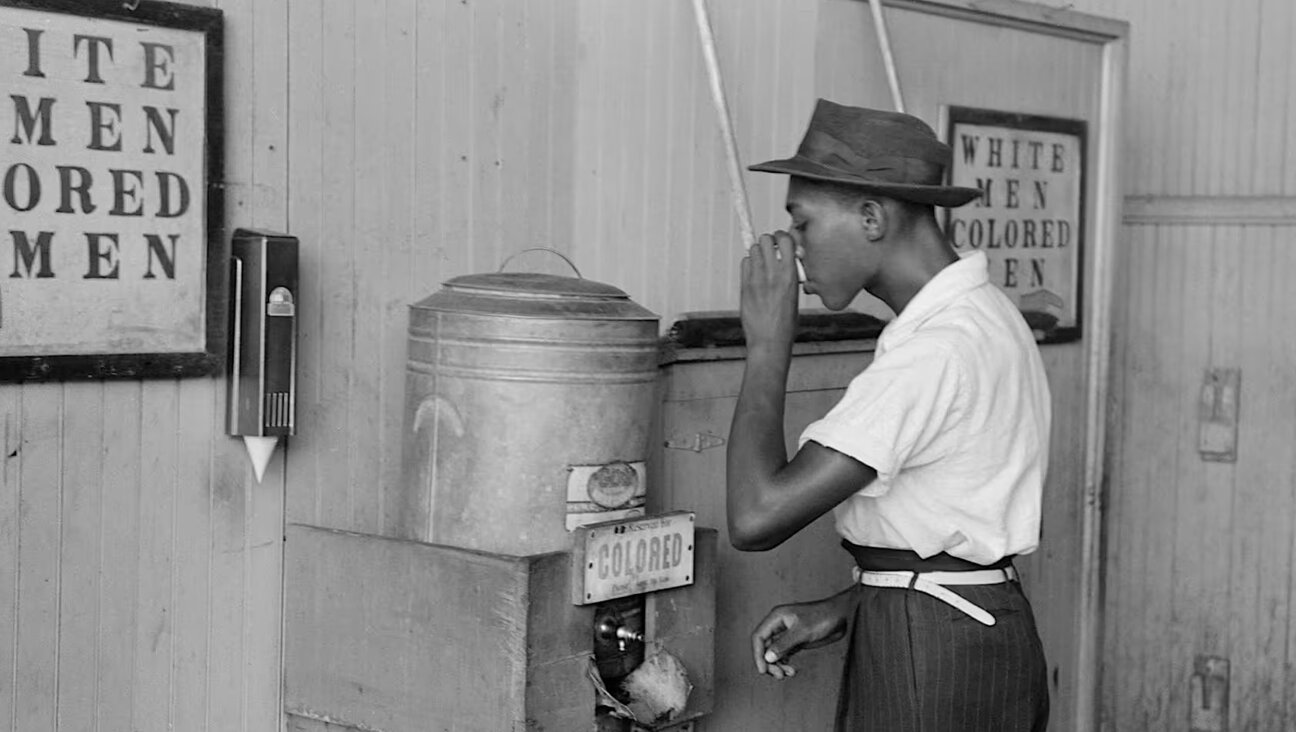How Jews In The 1940s Honored The Warsaw Ghetto Uprising — And How We Honor It Now

A Jewish fighter is arrested during the Warsaw Ghetto Uprising. Image by Getty Images
This article originally appeared in the Yiddish Forverts.
The first Holocaust memorial services took place while the genocide of Europe’s Jews was still occurring. Whenever a city or town was liberated, a few Jews would return, clean up the mass graves where their relatives had been shot, erect a simple marker and chant “El Malei Rachamim,” the Jewish prayer for the dead.
Formal large-scale Holocaust memorial services would only come after the war. On April 19, 1948, the fifth anniversary of the start of the Warsaw Ghetto Uprising, a state-sponsored memorial service in Warsaw was attended by thousands of Jews from all over Europe, as well as from the U.S. and Israel. Among them was Mark Murstein, a Polish Holocaust survivor who had escaped to the USSR and returned to his homeland in 1947.
“At that point there were still Jewish political parties active in Poland,” Murstein, who lives in a suburb of Boston, told the Forverts in Yiddish. “In 1948 I was living in a little town in Silesia. I was a member of [the Labor Zionist party] Hashomer Hatzair and a group of us traveled to Warsaw the day before the fifth anniversary memorial. The whole city lay in ruins. There was no auditorium to hold the ceremony in. So we stood outside in the rain.”
Amidst the rubble, Polish soldiers and members of Jewish youth groups marched in a symbolic honor guard in what had been the center of Jewish Warsaw. Marchers held banners with Yiddish slogans including: “In honor of the heroic sons of our people,” and “We children will take the place of our fallen heroes.”
The ceremony began with the unveiling of Nathan Rapoport’s famous statue at the site of the Warsaw Ghetto Memorial, followed by a wreath-laying ceremony. Rabbis from America, Poland and Israel, wrapped in prayer shawls that had been found in Auschwitz, wept as they prayed. Dozens of politicians from around the world gave speeches in Yiddish, Polish, English and Hebrew. Among them was the British MP Sidney Silverman, who described Rapoport’s statue as not only “a memorial to the heroic dead, [but] a challenge and a warning to the living.”
“It was an incredibly moving ceremony,” Murstein said.
That same day in New York City, tens of thousands gathered in Manhattan’s Riverside Park for the first memorial service at the newly inaugurated Warsaw Ghetto Memorial Plaza. Although the planned national Holocaust memorial that survivors hoped to build there was never constructed, every April 19, hundreds continue to gather at the plaza’s simple memorial stone, which stands in memory of Europe’s six million murdered Jews.
Shane Baker, the director of the Congress for Jewish Culture, emphasized the importance of the yearly memorial in Riverside Park to his organization.
“One of our main tasks according to our constitution is to conduct a memorial service,” Baker told the Forverts in Yiddish. At this year’s ceremony, which will take place at 3 p.m. on April 19, the poet Irena Klepfisz — who was born in the Warsaw ghetto and whose father Michal Klepfisz was killed in the uprising — will read accounts of her fellow survivors. Dr. David Slucki of the College of Charleston will reflect on the meaning of the Warsaw Ghetto Uprising today.
“This year’s ceremony will be the same as always,” Baker said. “We’re hoping, of course, that more people will come than usual because it’s the 75th anniversary.”
One unique ceremony that has not been held in 40 years is the bilingual Yiddish and English memorial program honoring the fallen ghetto fighters formerly conducted every summer at the Bundist summer camp Hemshekh, which counted among its founders surviving ghetto fighters. This year the program is being organized by Sabina Brukner, a child of Holocaust survivors, who regularly attended the camp.
“We’d spend a whole week preparing for the program,” Brukner told the Forverts in Yiddish. “Because my parents hadn’t told me much about the Holocaust I didn’t understand what the ceremony was about at first. I really first learned about the Holocaust through ‘Ghetto Night.’”
For Brukner it was a unique and life-changing experience.
“I’ve never seen anything like our ‘Ghetto Night.’ It was neither Zionist nor religious. Instead, we emphasized Jewish heroism and resistance.”
While attending the annual Holocaust memorial program in Riverside Park, Brukner often thought that she should organize another “Ghetto Night” in New York. This year, she is making it happen together with the Folksbiene, where she works as the venerable Yiddish theater’s literary manager.
Around 50 alumni of Camp Hemshekh will perform as part of the program, and Brukner expects there to be many more in attendance.
“It will be a sort of reunion for us,” Brukner said. “As much as possible, we’d like to do it just like we did at Camp Hemshekh. We’re going to read the same poems and sing the same songs. I’ve never seen anything as moving as our program. A friend of mine described it as ‘a modern Midrash for our time.’”

















